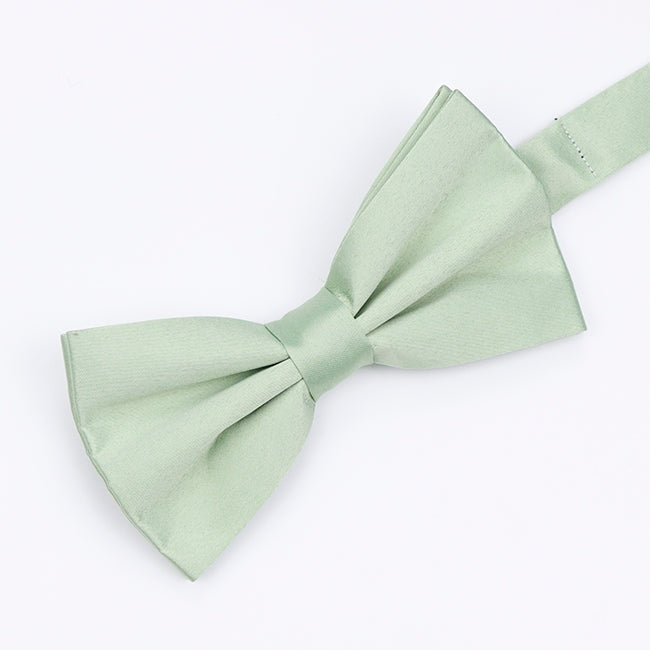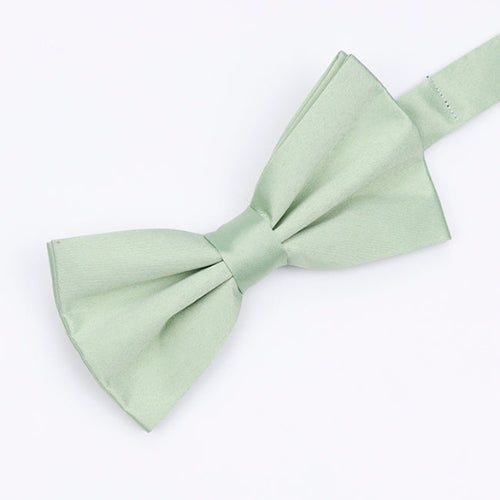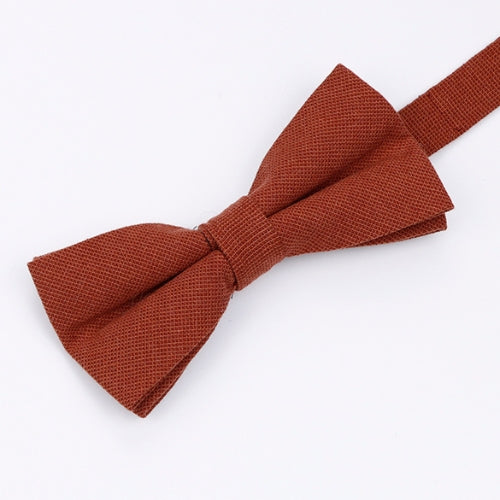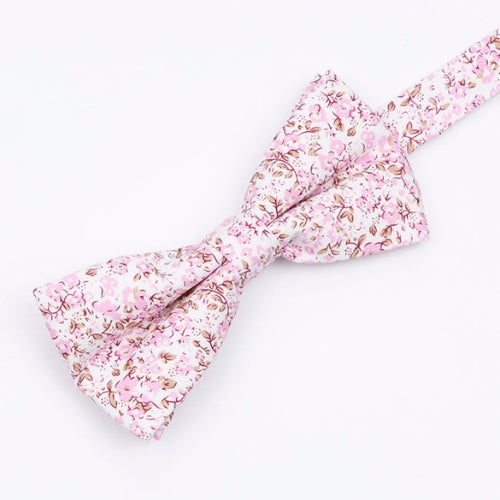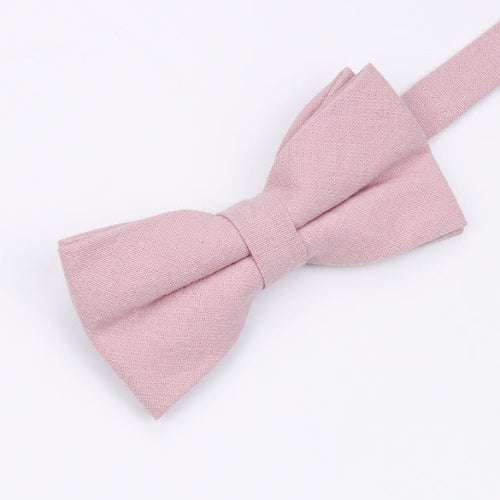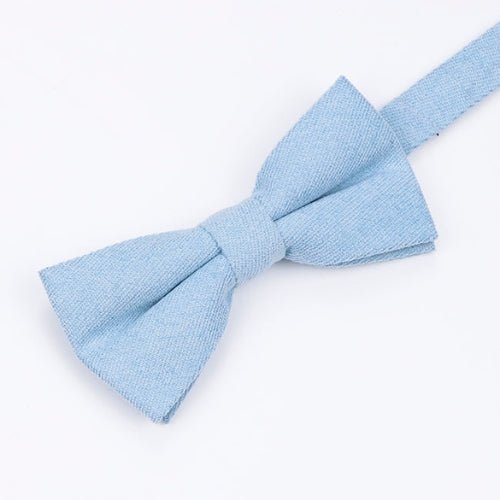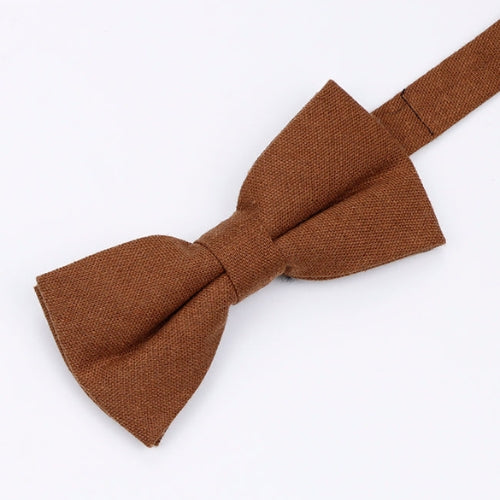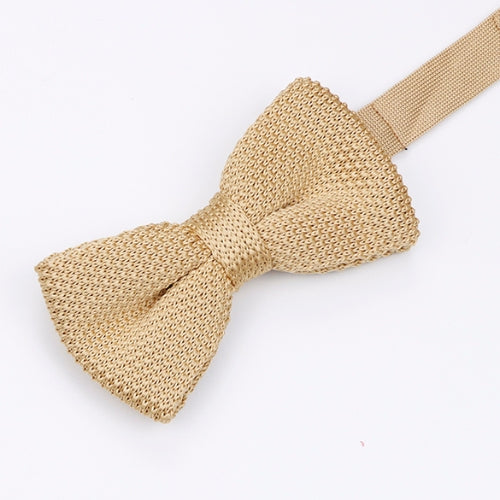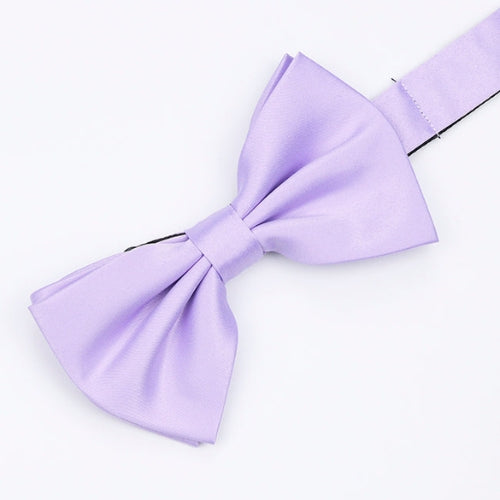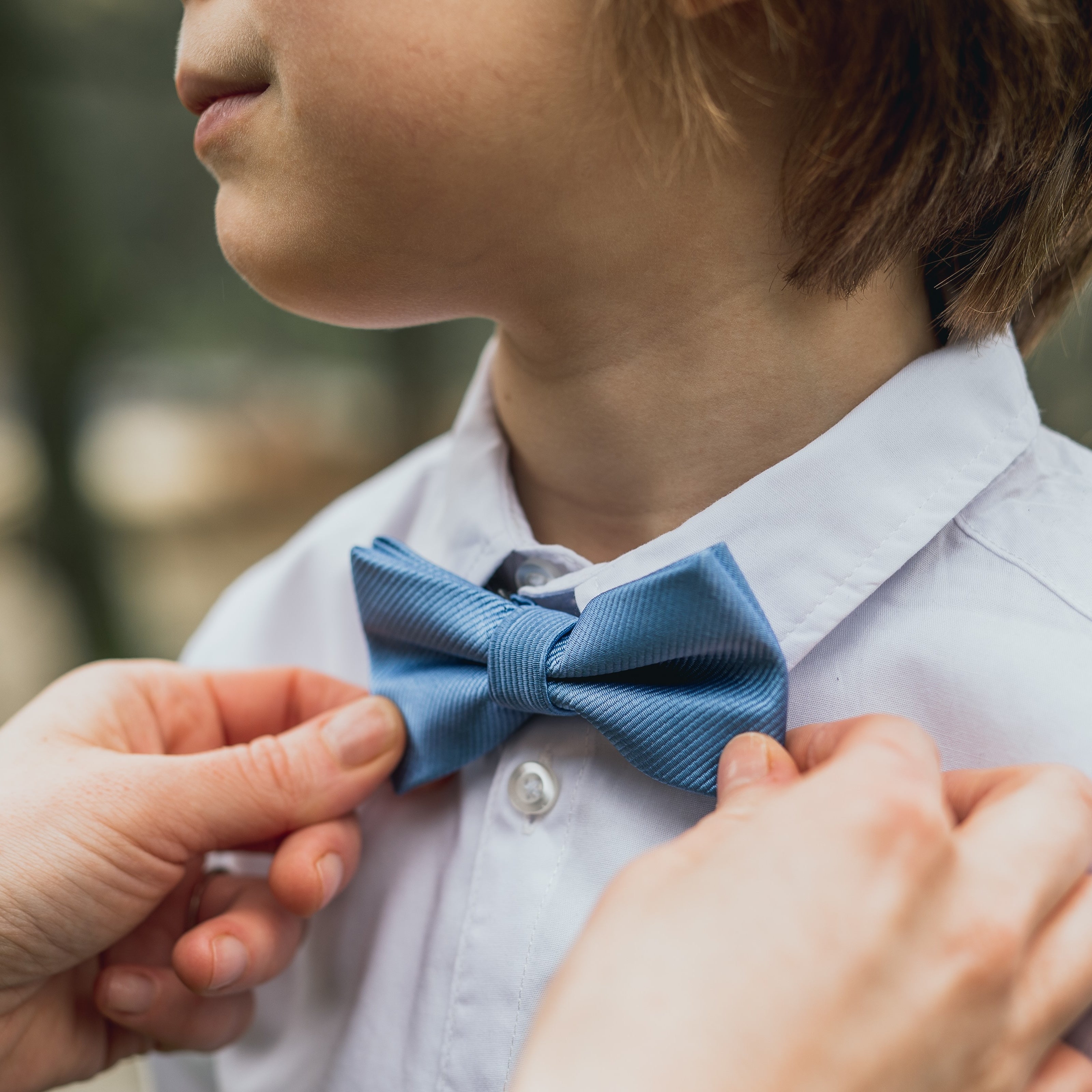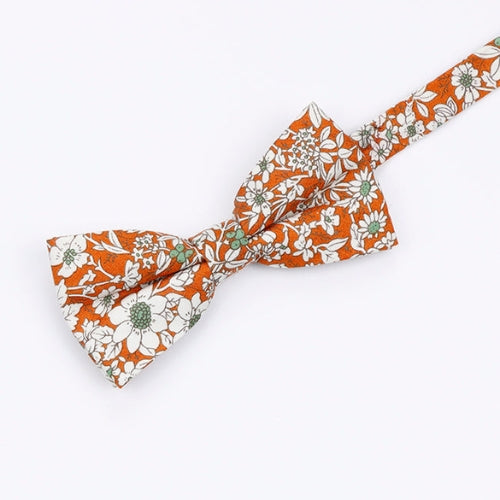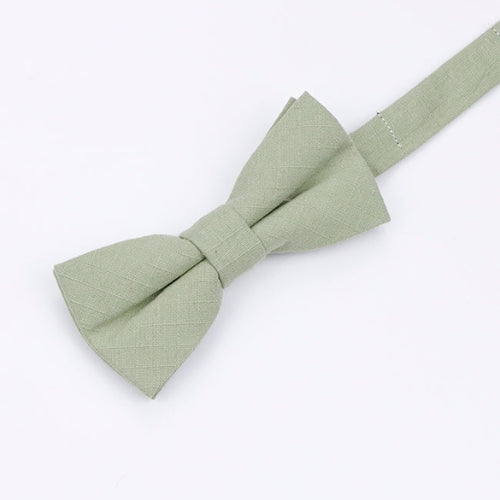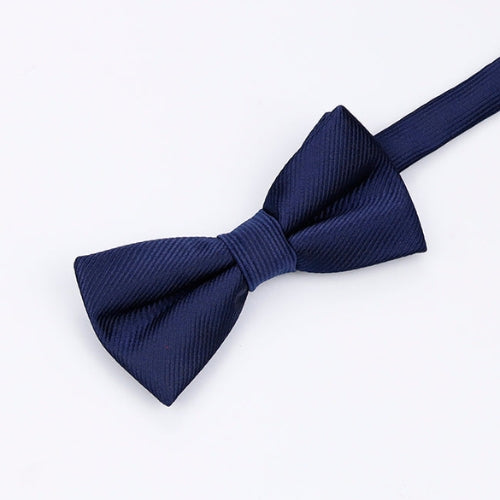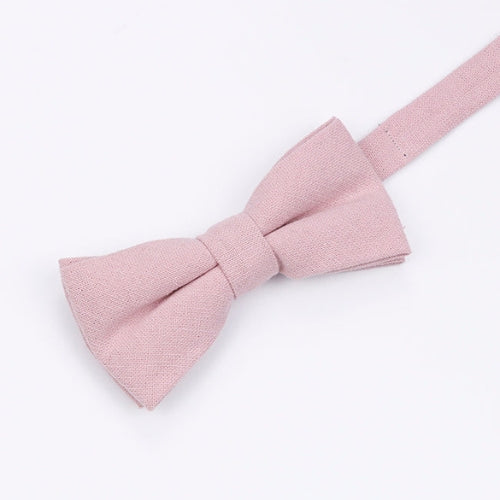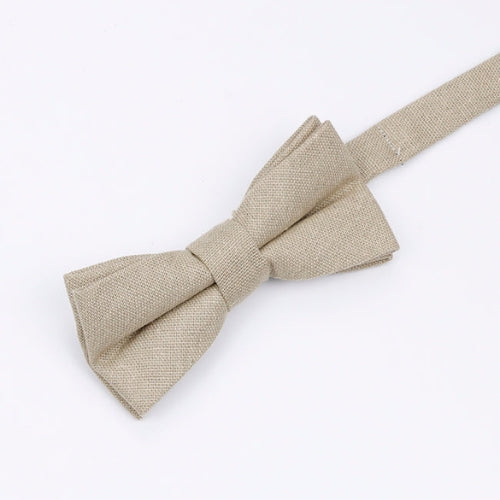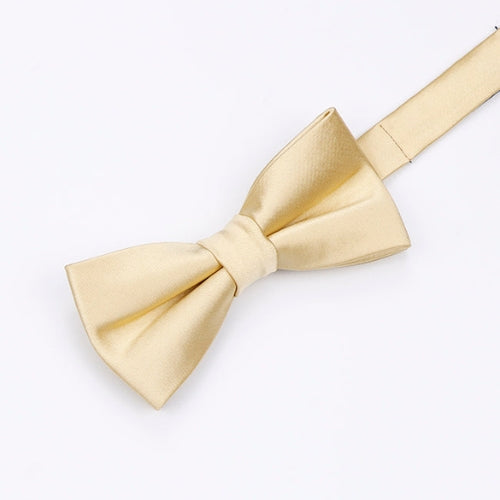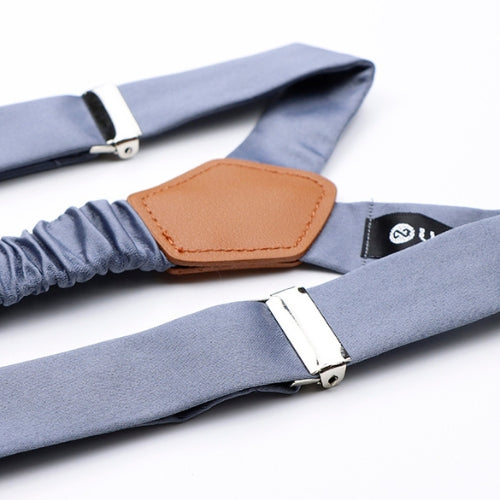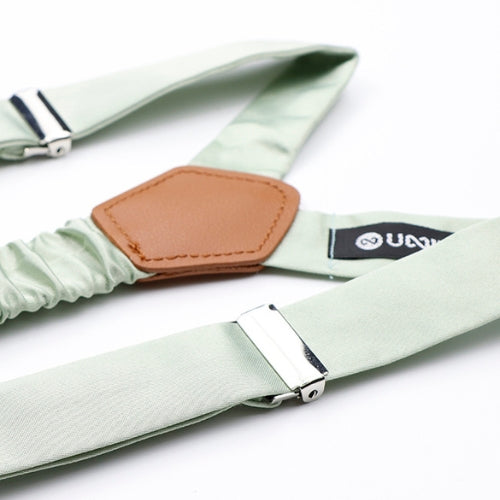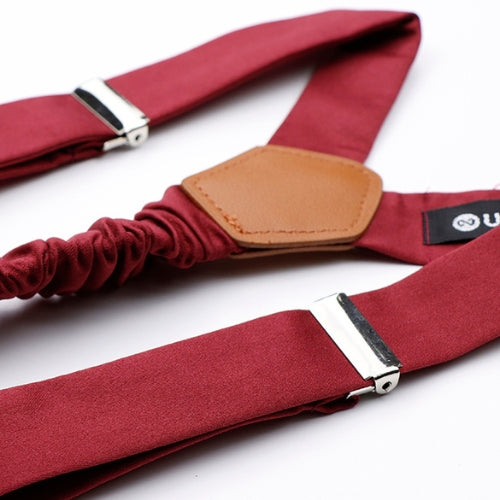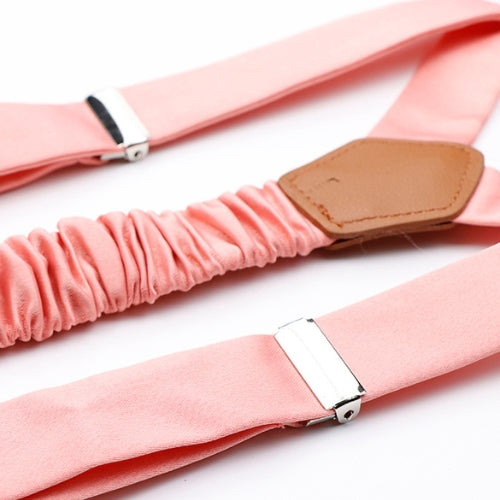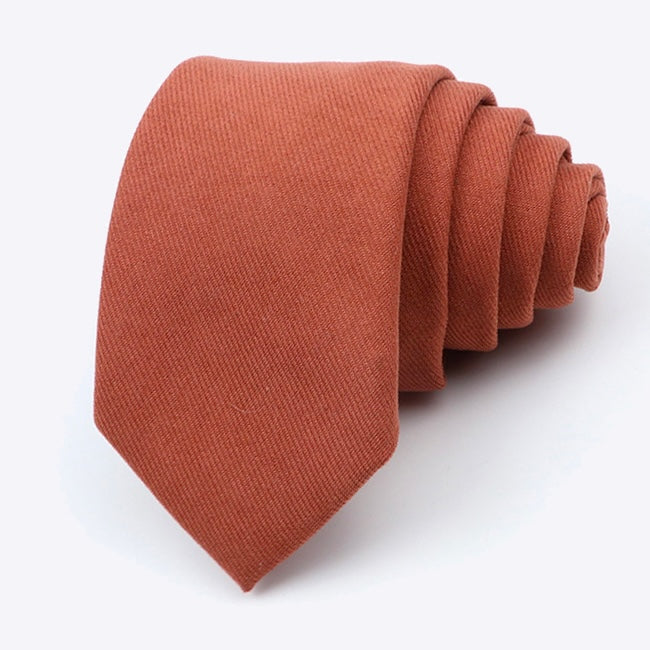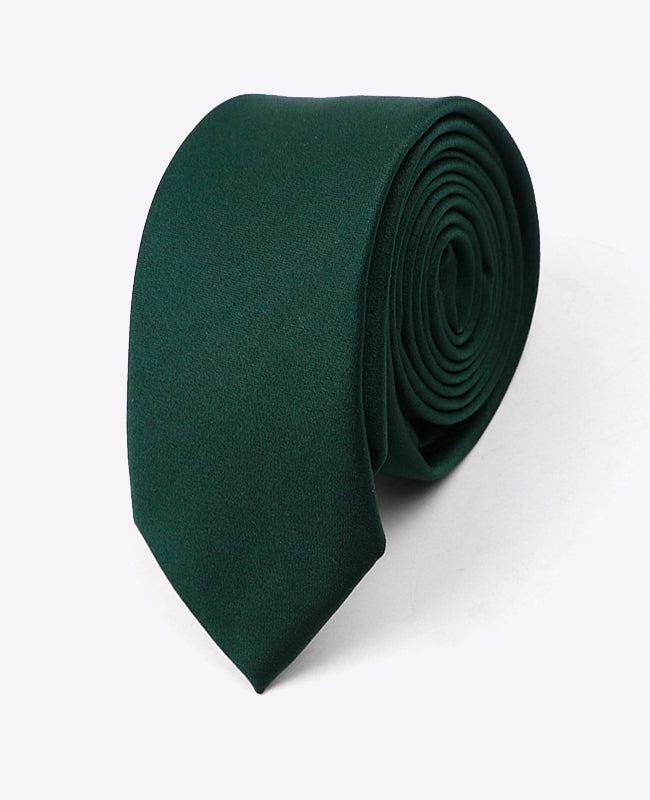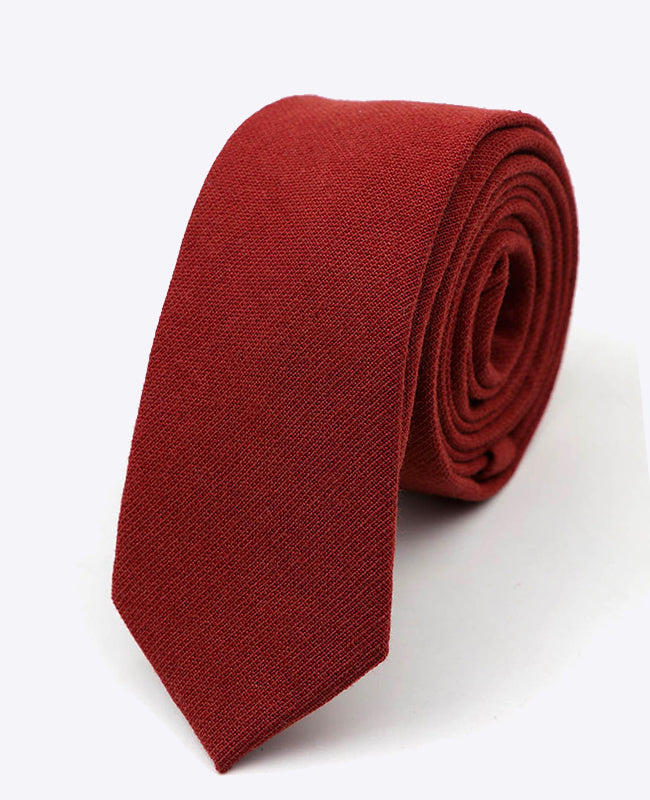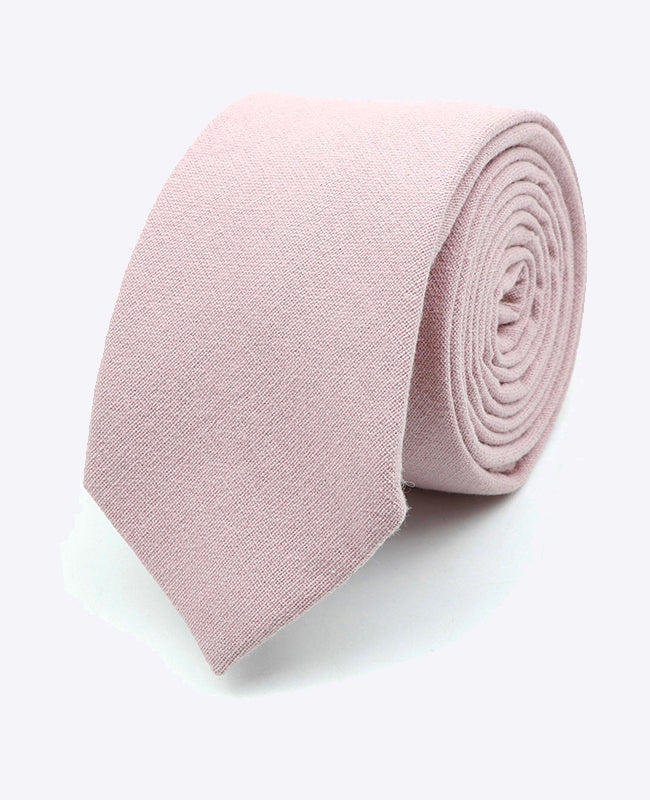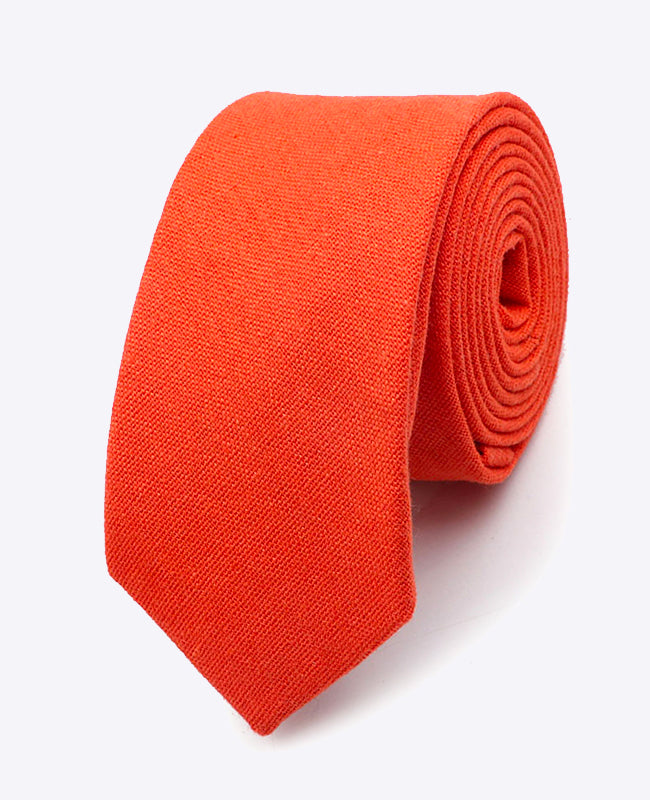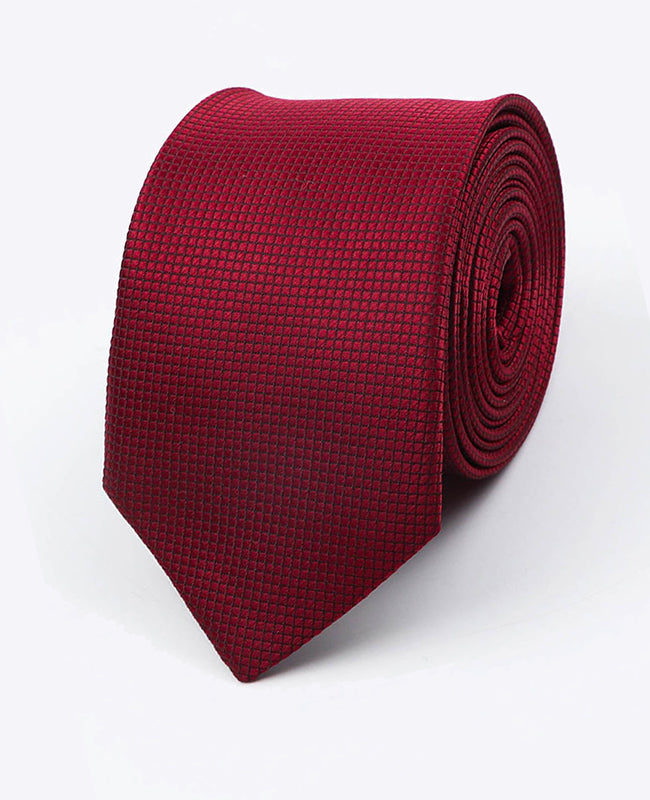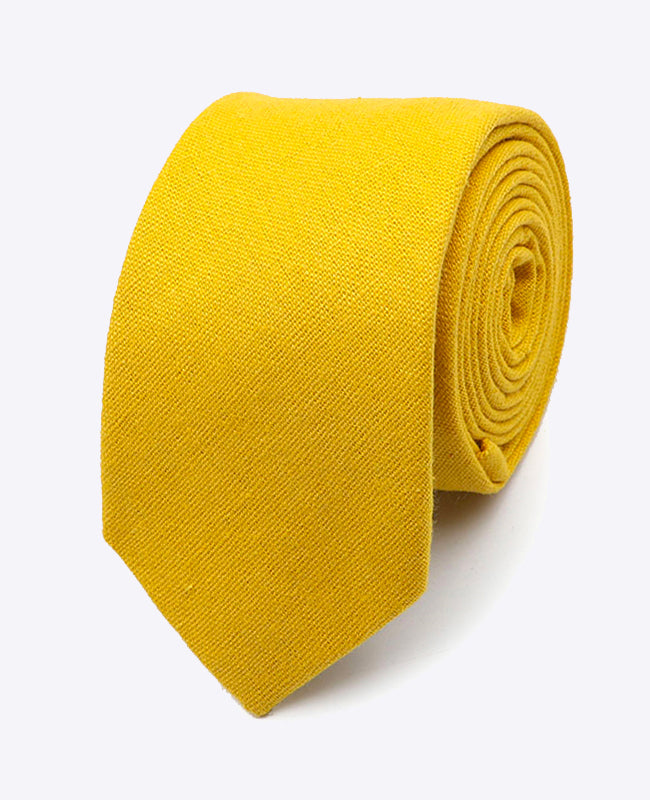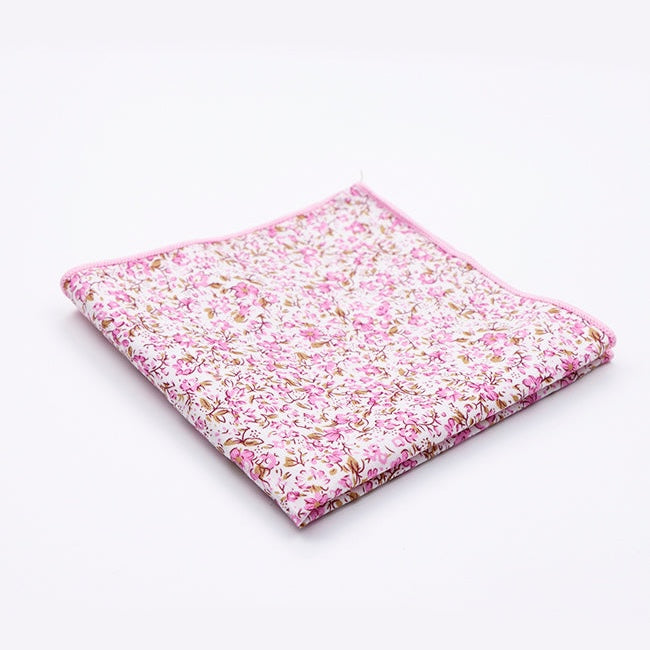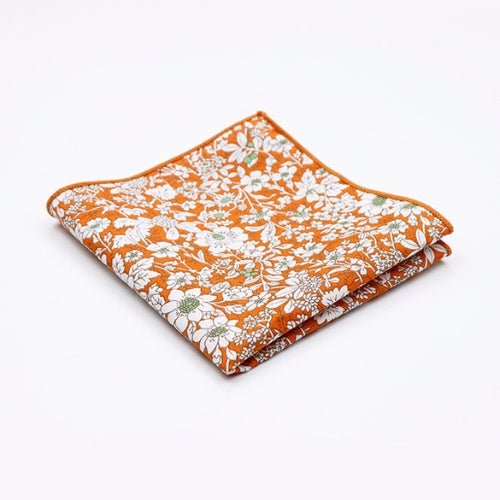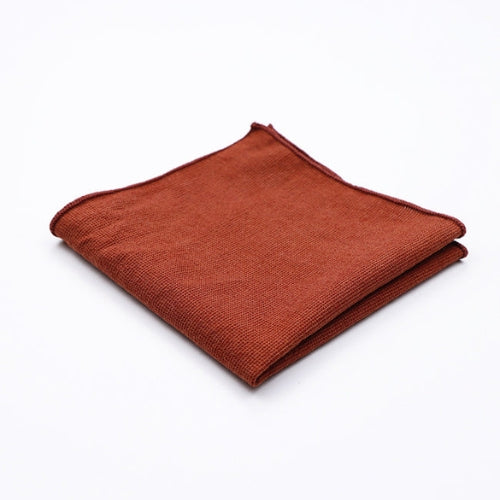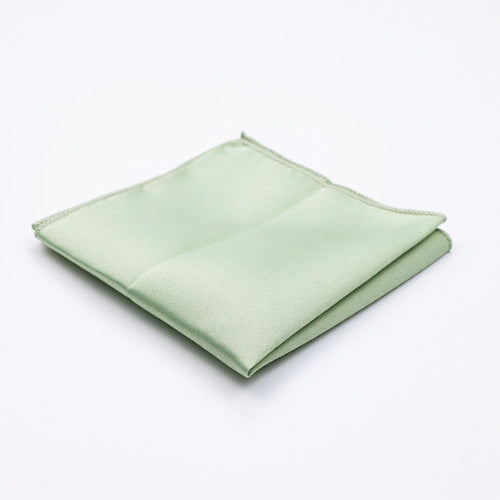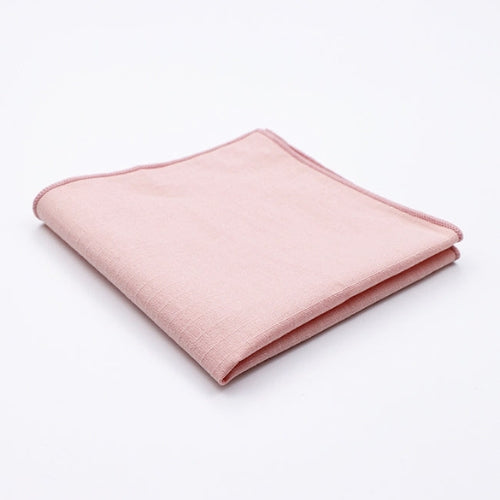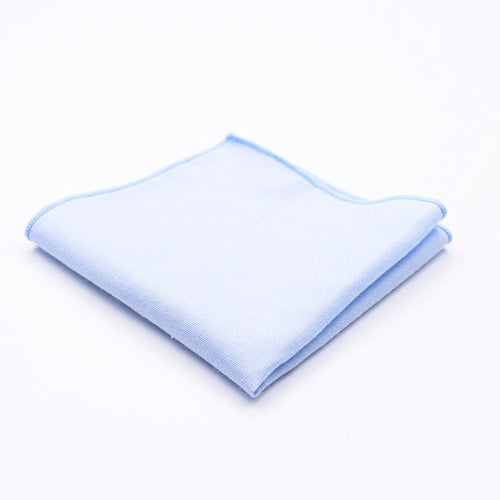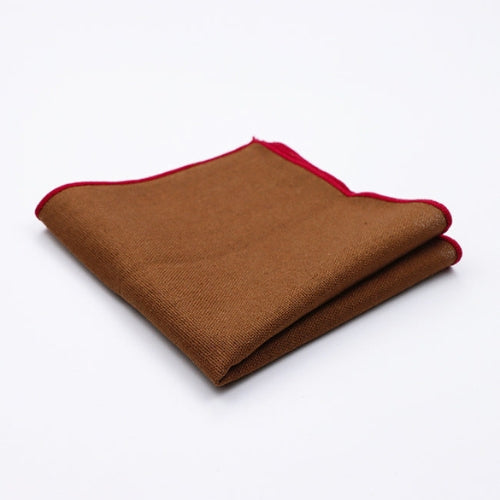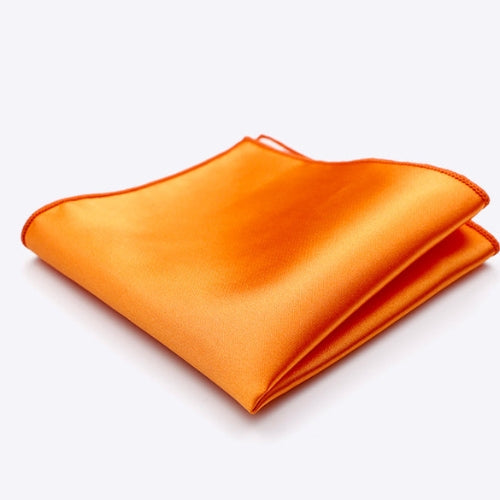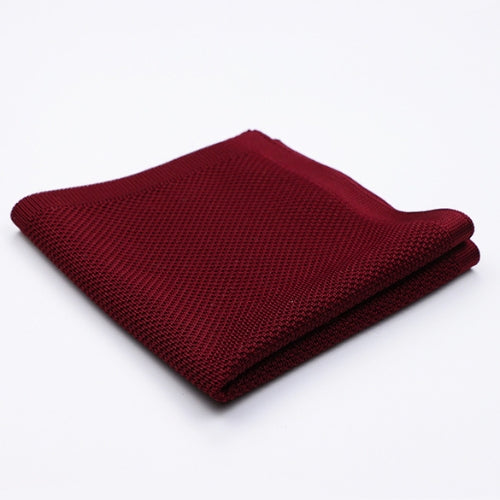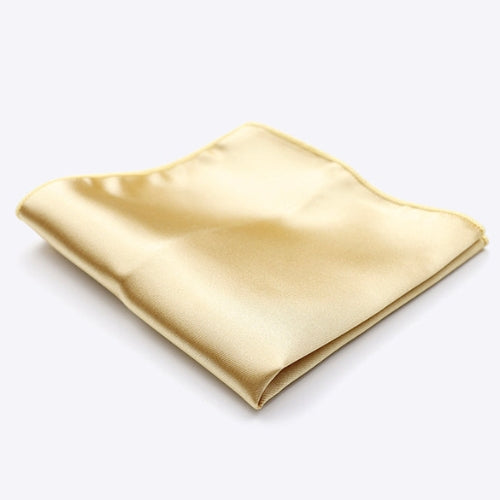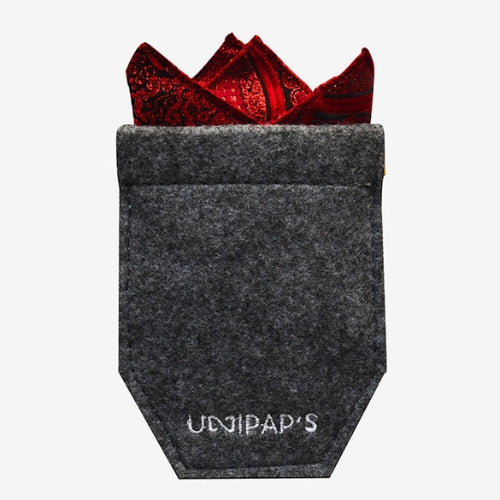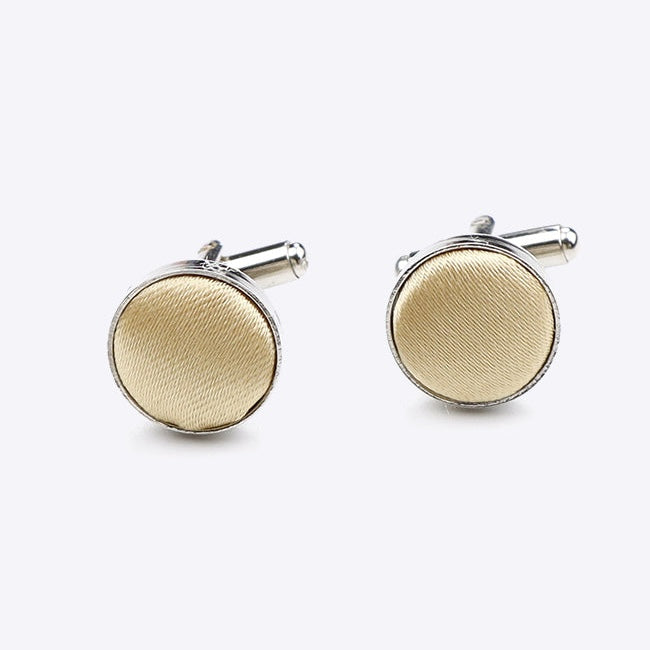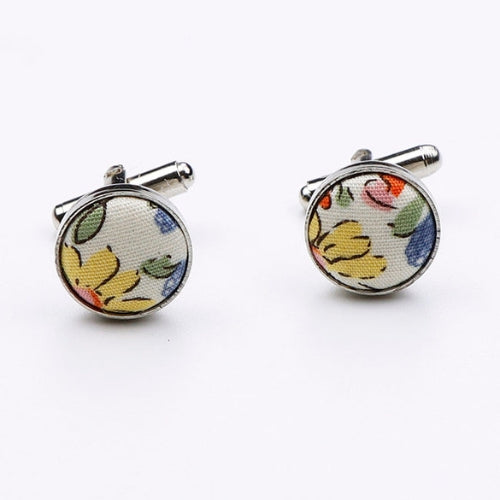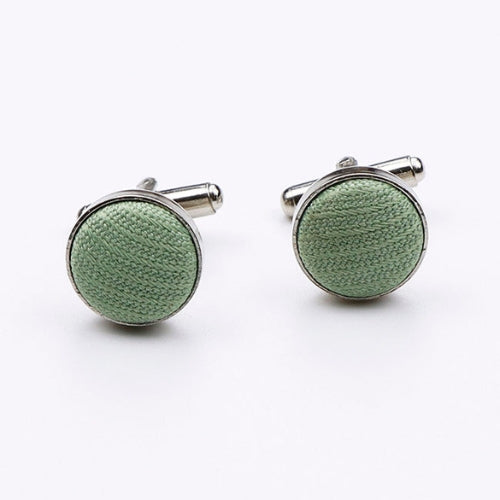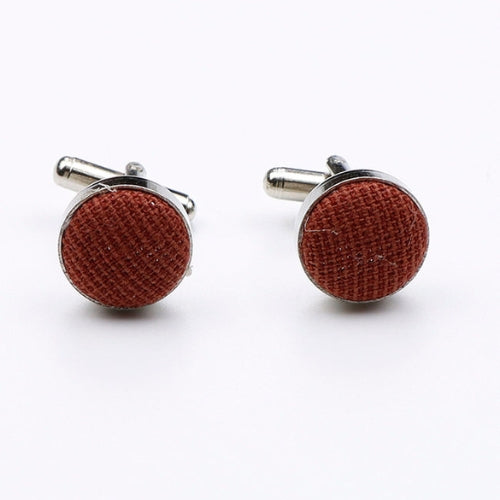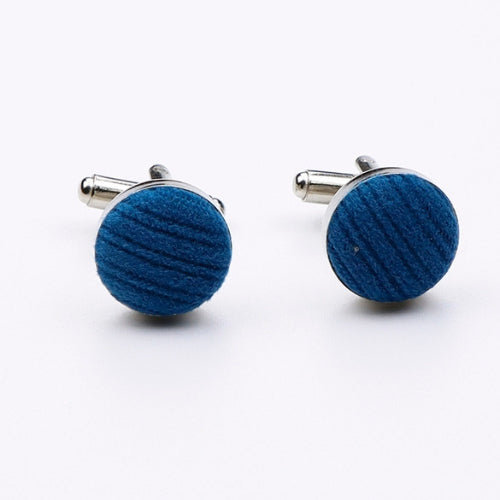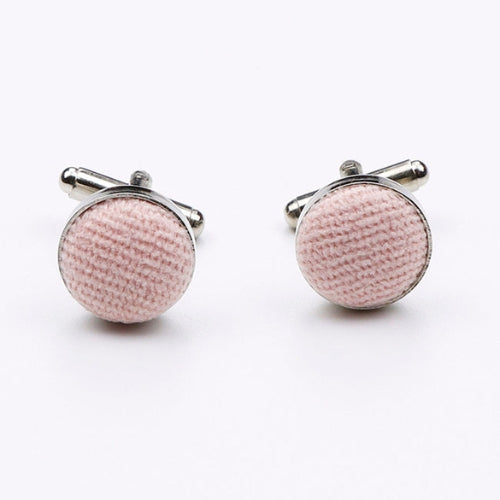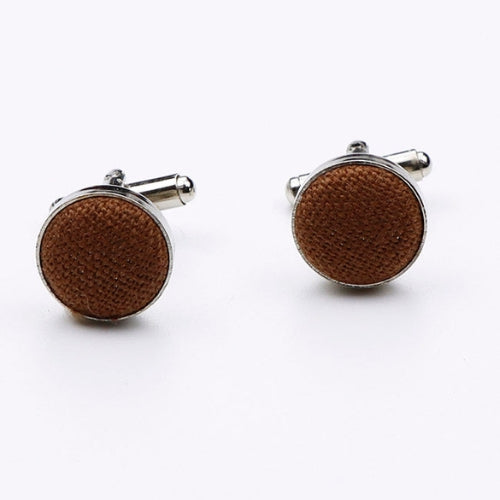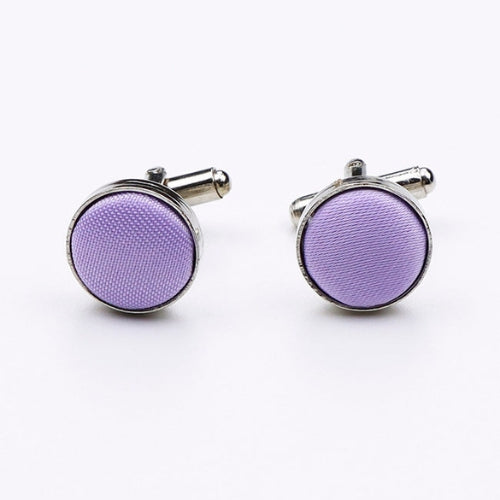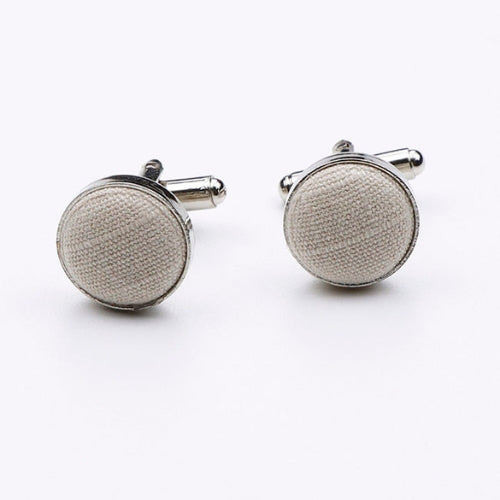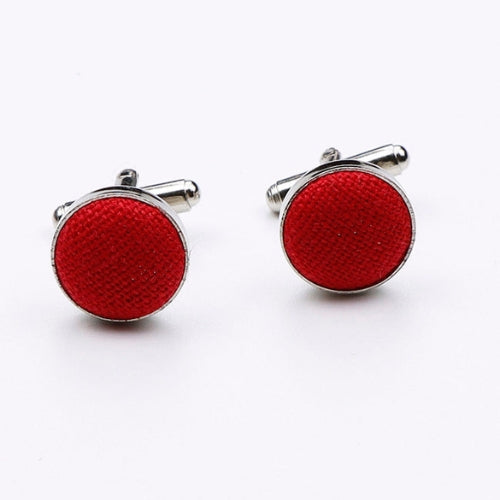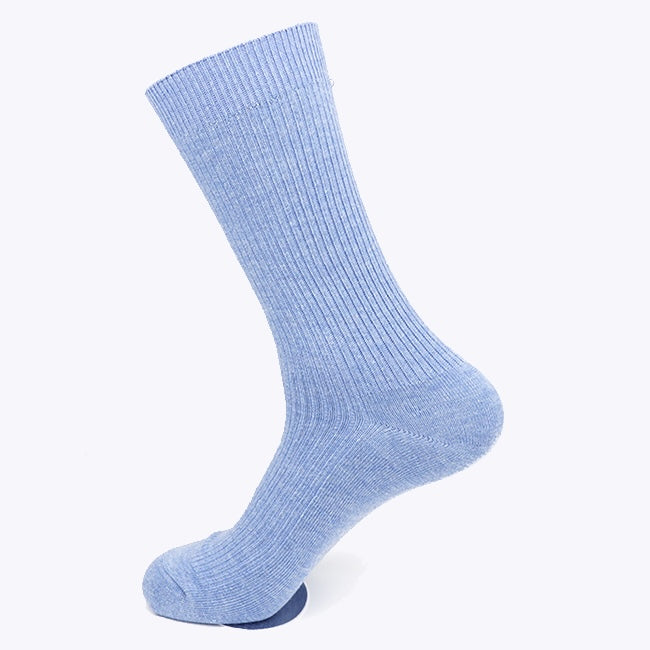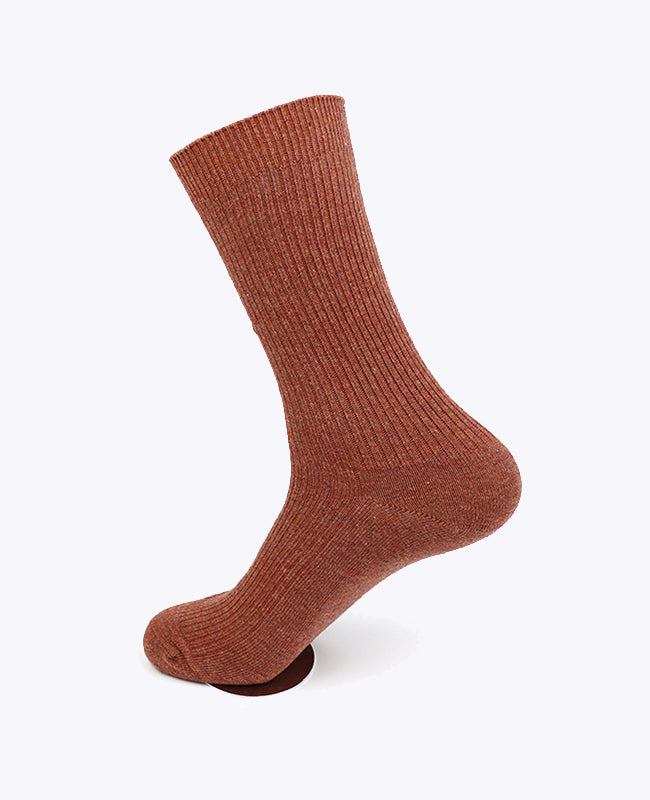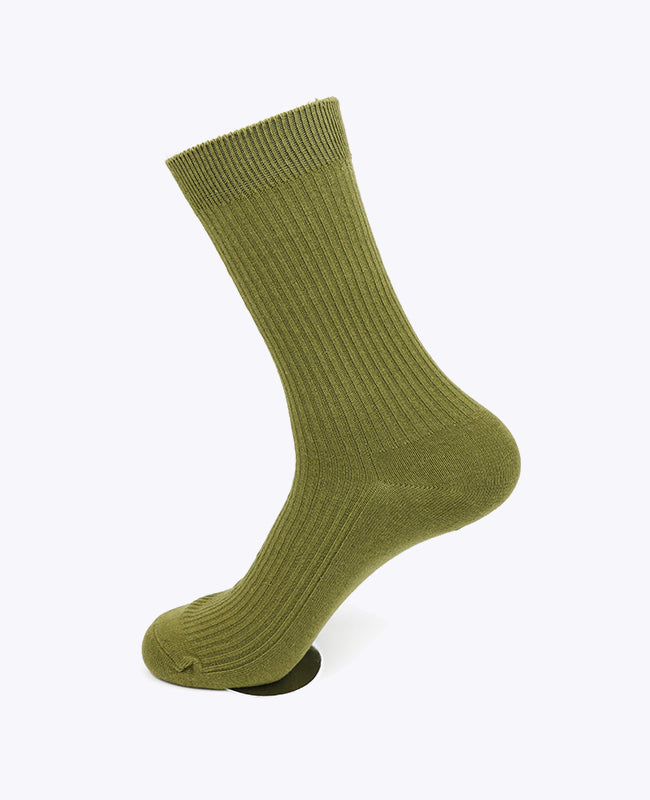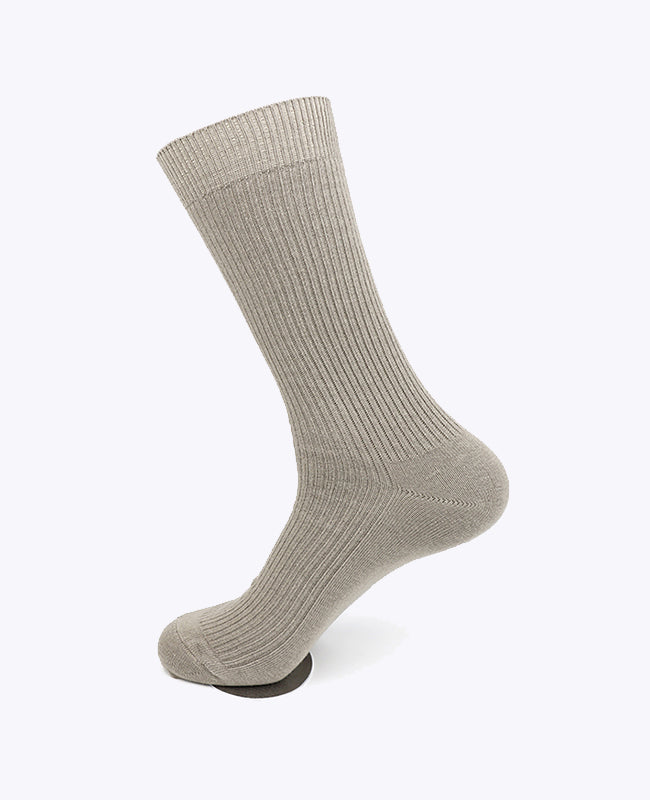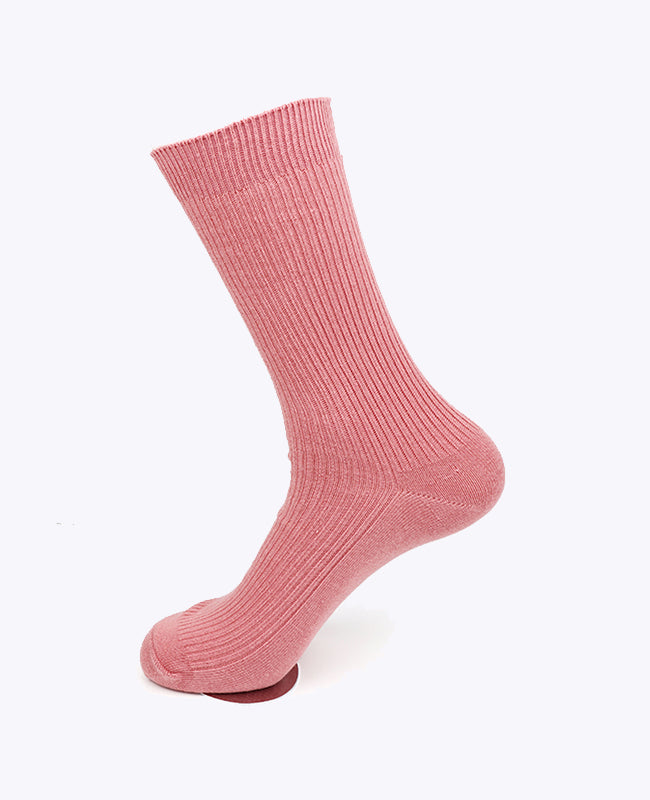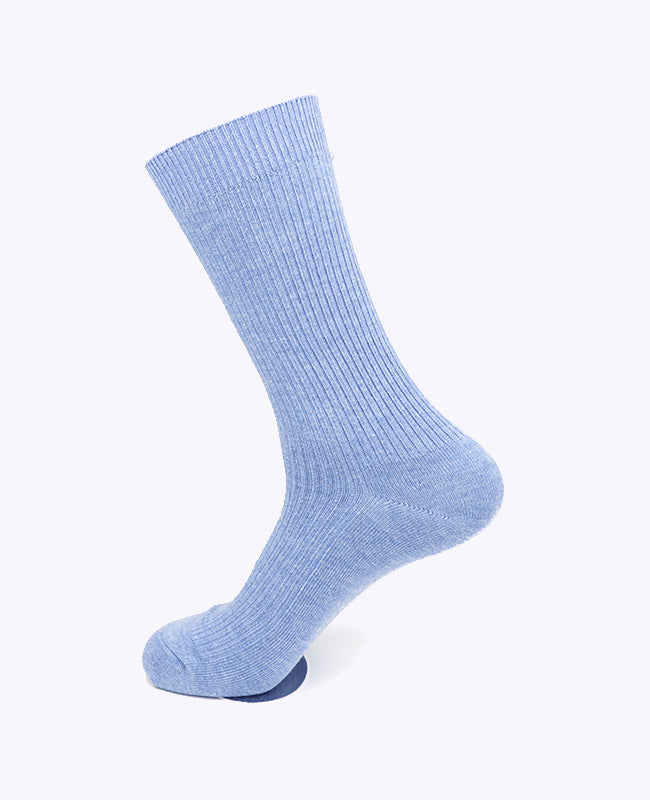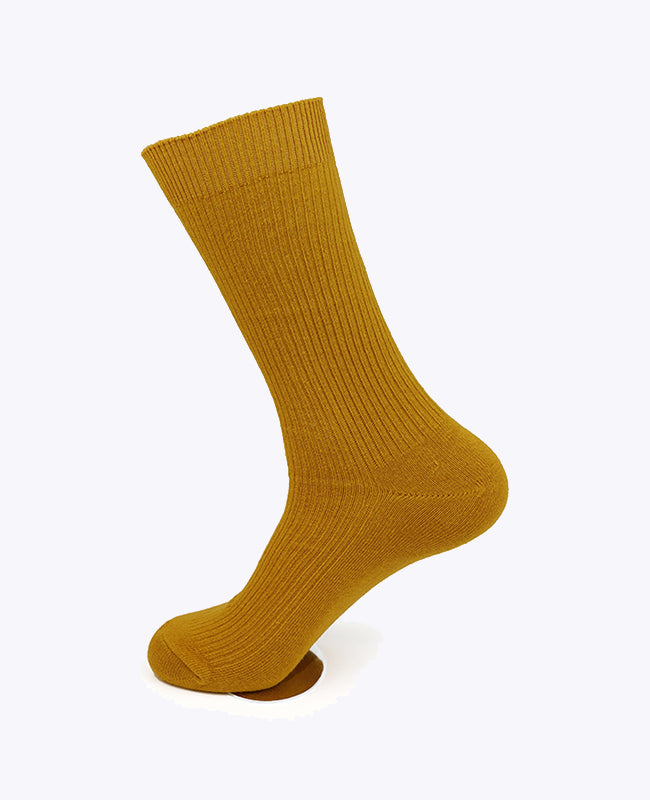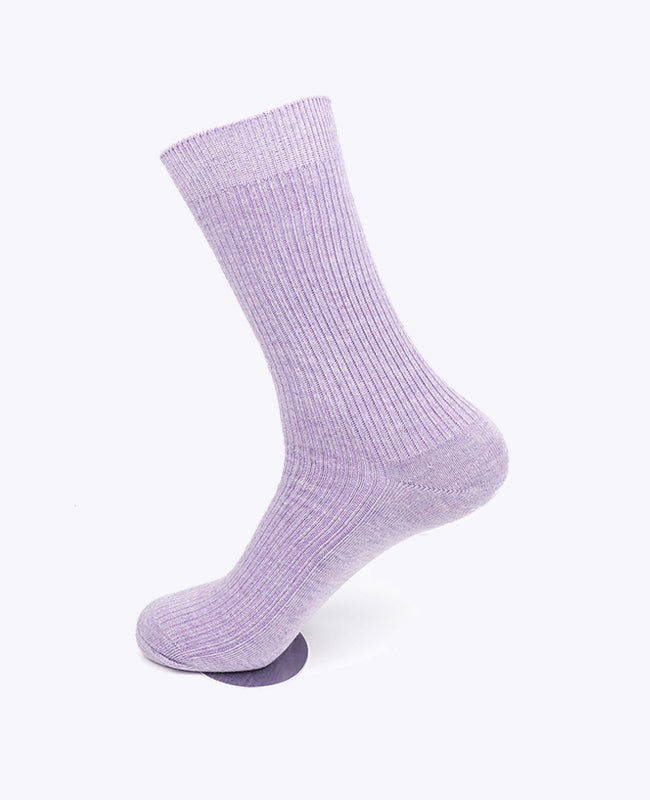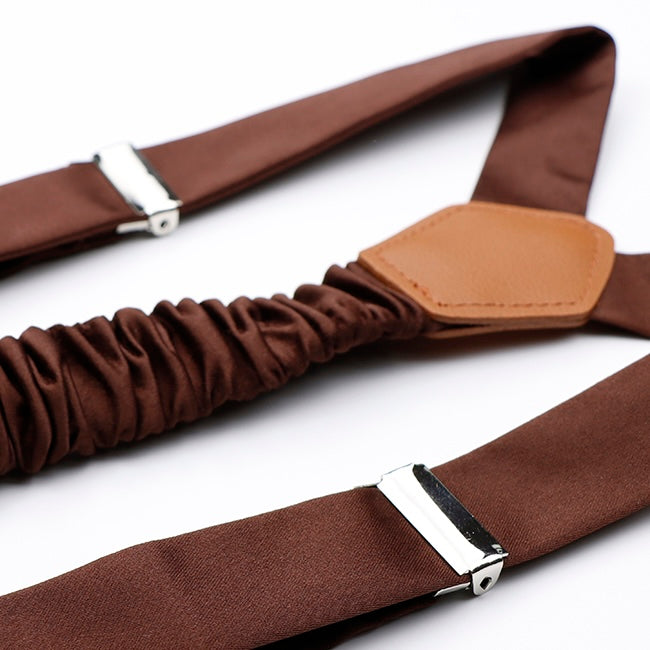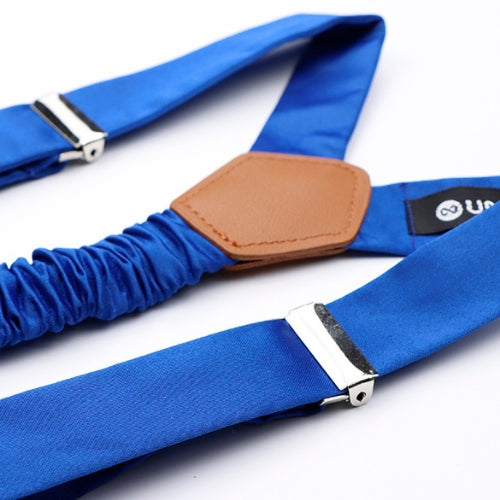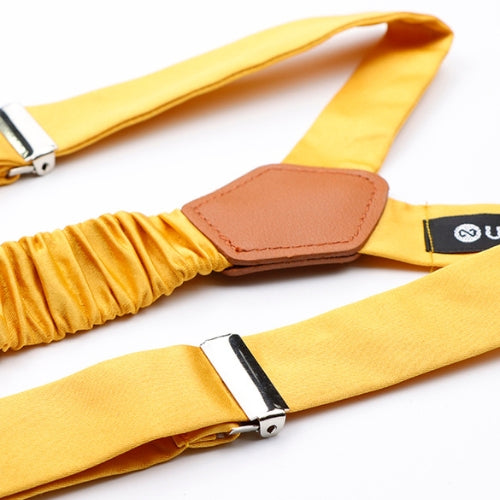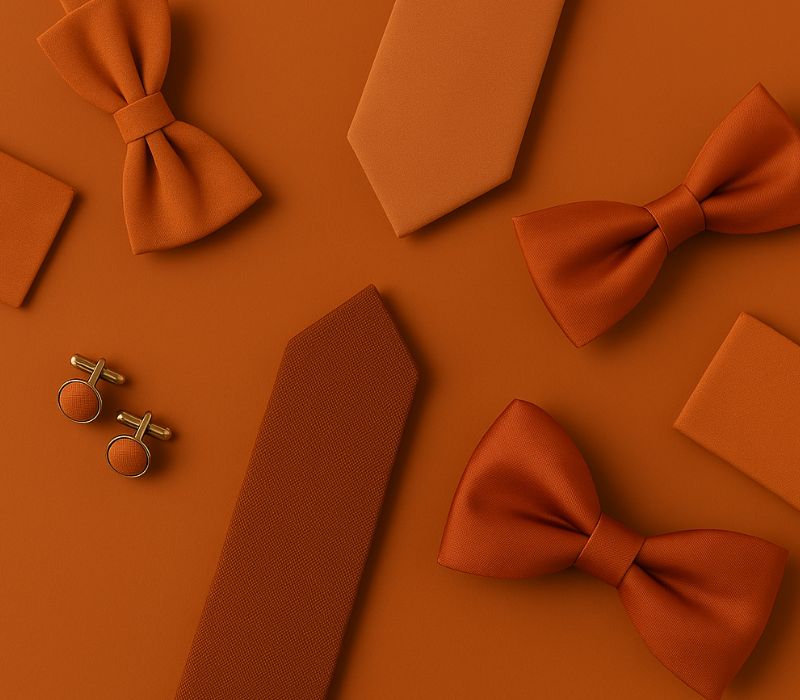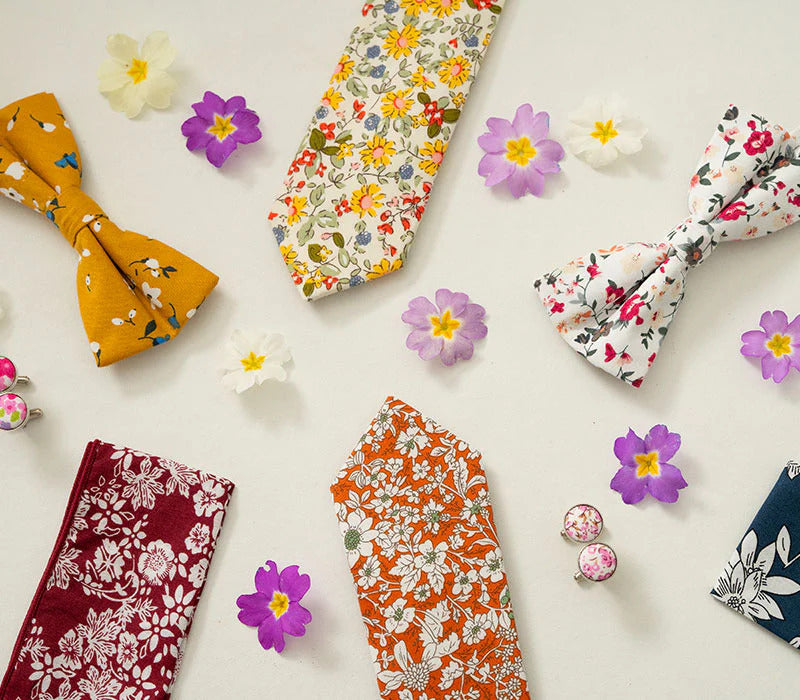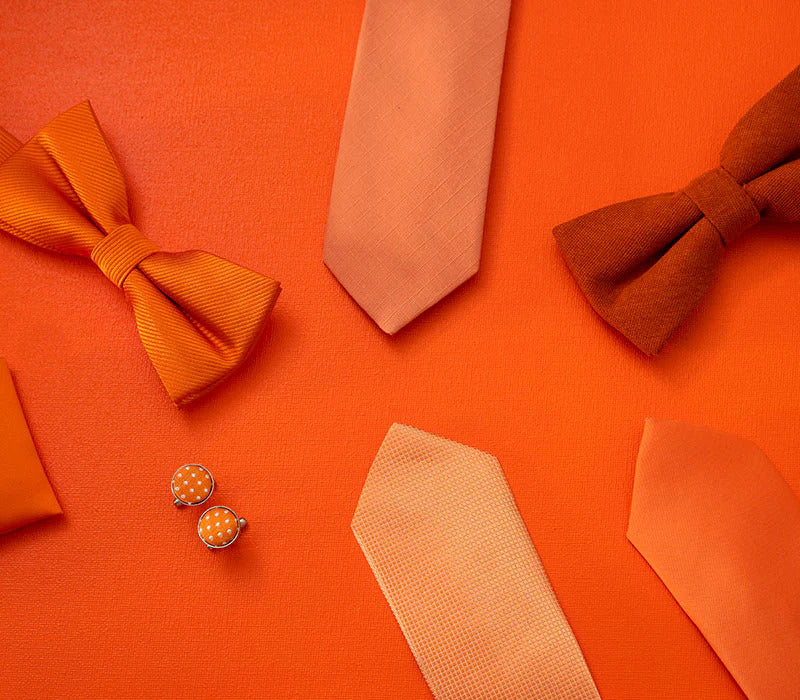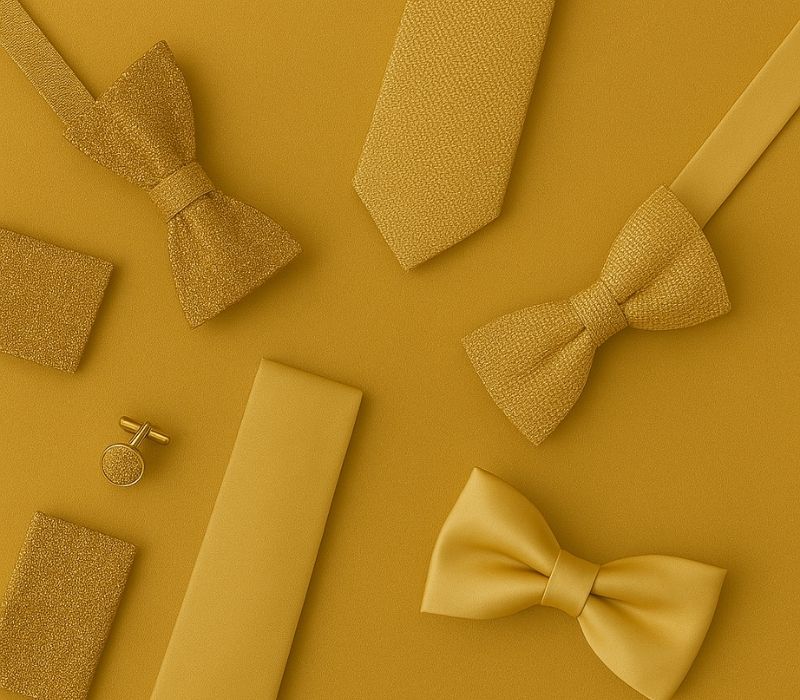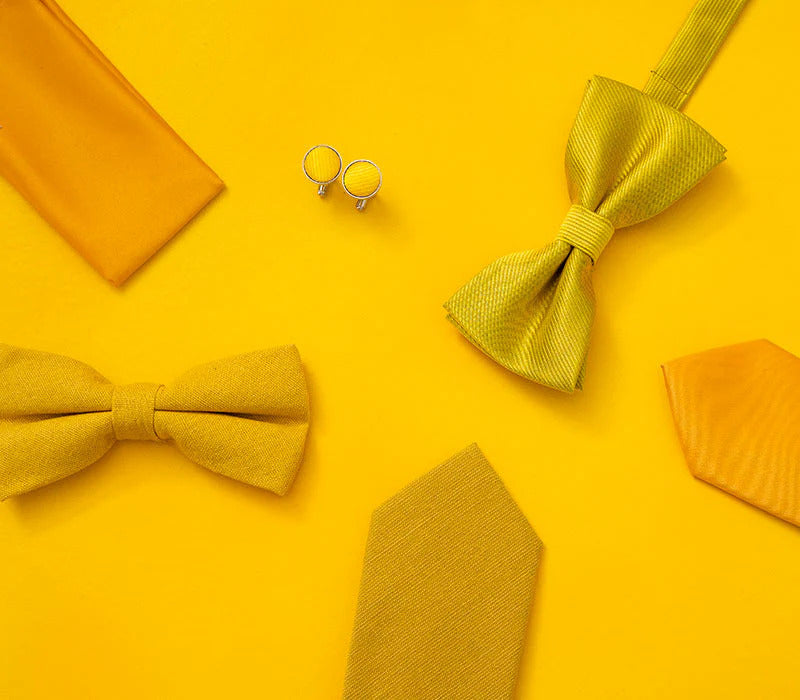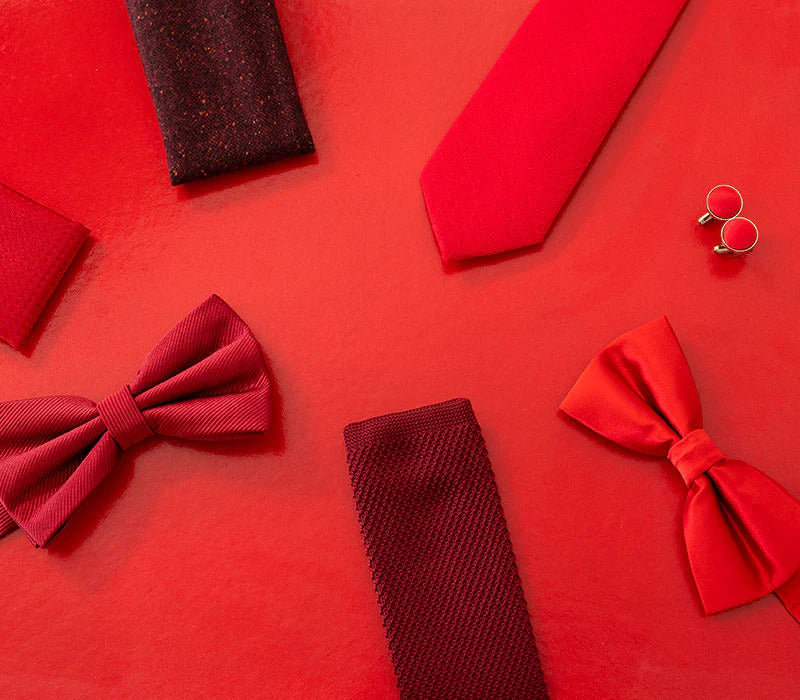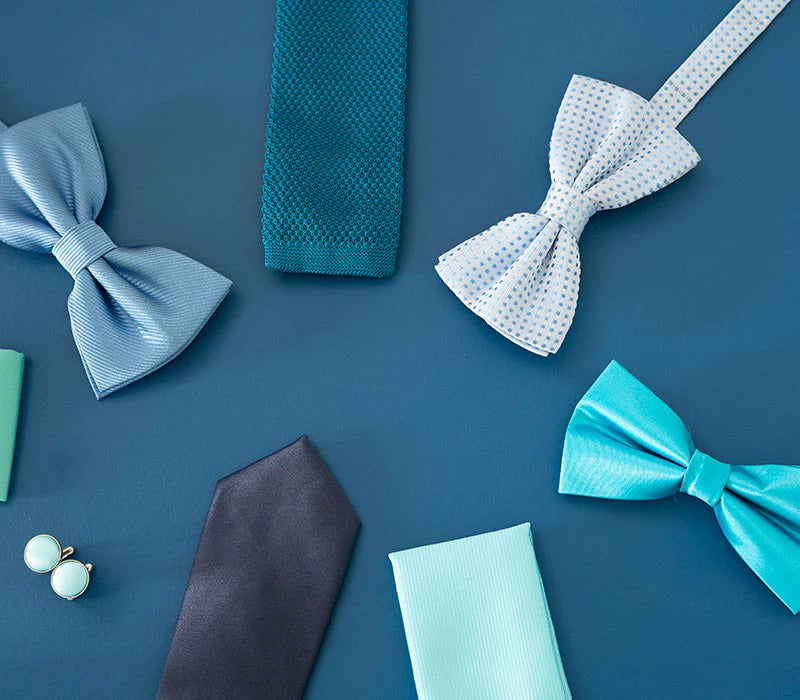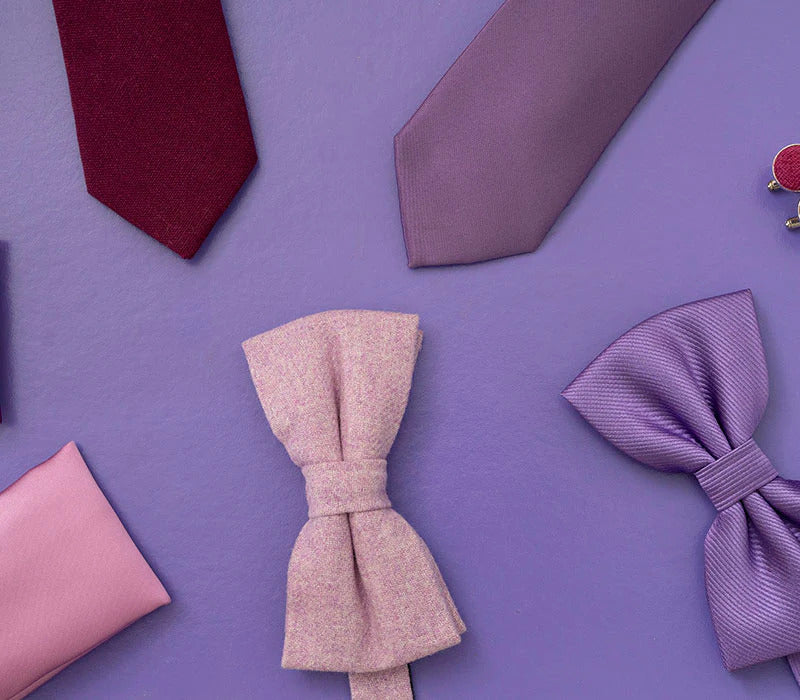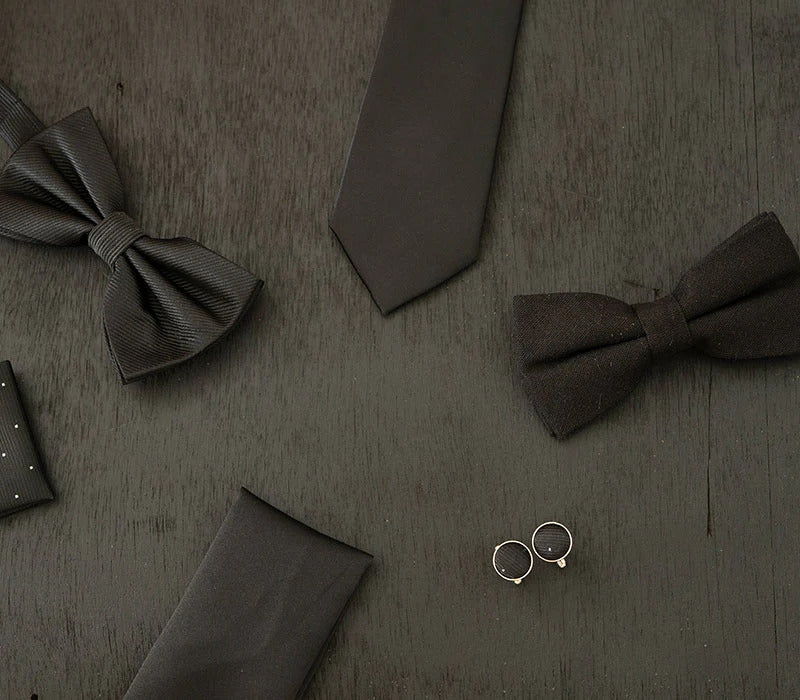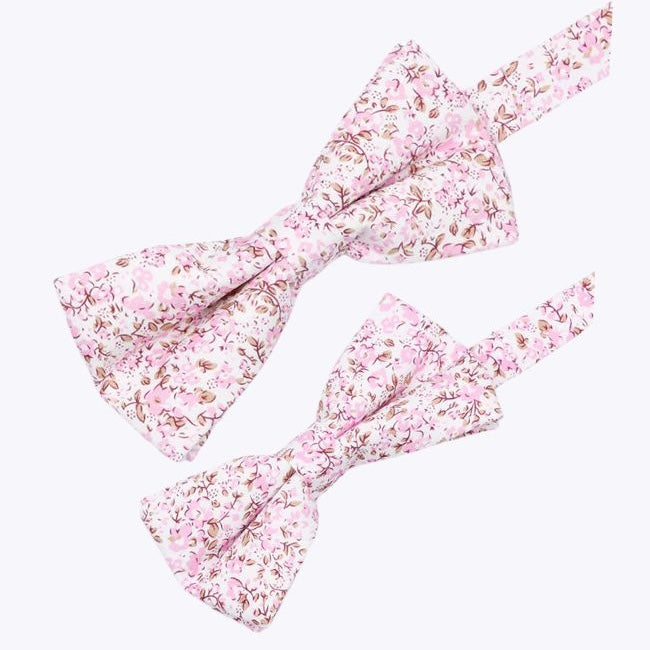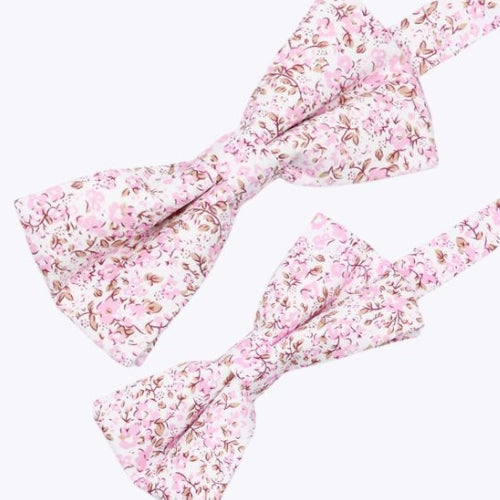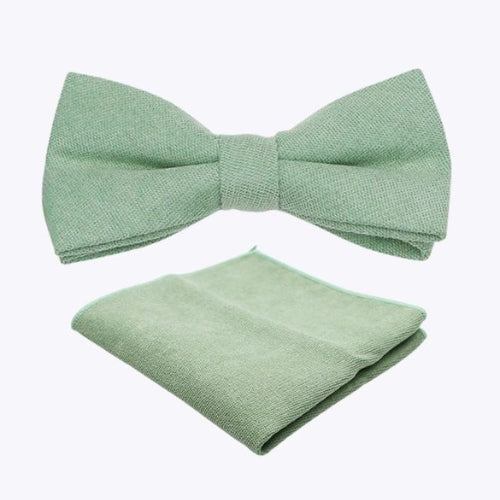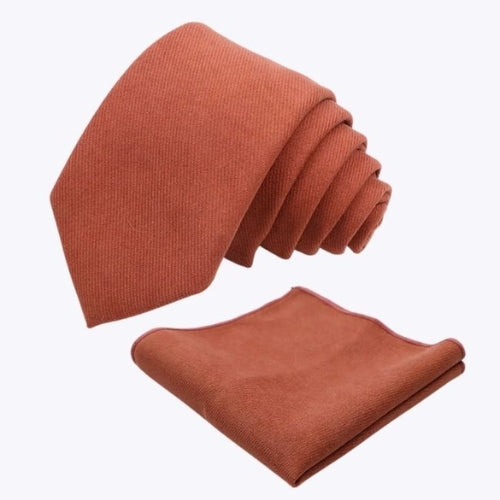Matching a tie with a pocket square is a subtle art that transforms a classic outfit into an elegant and refined menswear look. These two accessories, often considered secondary, nevertheless play an essential role in the overall harmony of an outfit. When well chosen, they reflect the wearer's attention to detail and personality, while adding a touch of sophistication to a suit. The tie and pocket square pairing is not simply a question of color; it also relies on the balance of materials, patterns, and proportions. It is this combination that adds depth to a style, without ever falling into excess or visual clutter.
Choosing a tie and pocket square shouldn't be left to chance. These accessories not only add a personal touch to a formal outfit, but also adapt to different occasions: weddings, professional events, or elegant evenings. A well-matched tie and pocket square can highlight the sobriety of a plain suit, or, conversely, bring contrast and dynamism to a more daring outfit. To achieve a harmonious result, it's essential to understand the basic rules, know how to play with colors, and explore available textures. Materials like cotton, linen, wool, velvet, or even satin polyester open up a range of creative possibilities, allowing you to vary the effects according to the seasons and occasions.
In this article, we'll explore the key principles for pairing a tie and pocket square elegantly. We'll first look at the fundamental rules to follow, then we'll discuss the choice of colors and materials. Finally, we'll analyze how patterns can be stylishly combined to create a balanced and refined ensemble. These practical tips will provide clear guidelines for avoiding taste errors and favoring a distinguished look, suitable for all situations.
The basic rules for matching a tie and pocket square
Pairing a tie and a pocket square requires following certain fundamental rules that guarantee an elegant look. The first is to never choose a pocket square that's identical to the tie. It's not about creating a perfectly matching duo, but rather about playing on complementarity. A pocket square should add a subtle nuance, a measured contrast, or a touch of originality that highlights the tie without copying it. For example, a navy blue tie can be paired with a pocket square with a subtle pattern that features a hint of blue, but also other complementary colors like white or gray.
Another key principle is visual balance. If the tie is already heavily patterned, the pocket square should remain understated to avoid overloading. Conversely, a solid tie can be enhanced with a bolder pocket square, whether floral, geometric, or striped. This alternation creates a dynamic yet elegant ensemble. The idea is to find a happy medium between understated style and personality.
It's also important to consider the context. For a wedding, the combinations can be more festive, with brightly colored pocket squares or textured materials like velvet. In a professional setting, it's better to opt for more discreet combinations, with neutral tones and understated patterns. Thus, the tie and pocket square become allies in adapting the suit to each occasion.
Finally, consistency with the rest of the outfit should not be overlooked. Accessories should blend harmoniously with the shirt, suit, and even shoes. For example, a wool tie worn with a tweed jacket will strike a beautiful balance with a cotton or linen pocket square. This focus on consistency guarantees a neat and refined look.
To discover a wide selection of ties suitable for all occasions, you can consult the collection available on Unipap's . The pocket squares, meanwhile, offer a variety of colors and patterns that allow you to explore all possible combinations. A complete selection is available in the pocket squares section.
Choosing the right colors for a harmonious ensemble
Color is the most visible element when it comes to pairing a tie and pocket square. Used well, it can create subtle harmony or elegant contrast. The basic rule is to choose colors that complement each other without canceling each other out. For example, a burgundy red tie can be paired with a pocket square in light gray, beige, or even midnight blue tones to create visual cohesion. The goal is to play with nuances rather than repeating a single shade exactly.
Complementary colors are a great way to add depth to an outfit. A green tie can be enhanced with a pocket square that contains hints of red or terracotta. However, it's best to use these contrasts subtly, ensuring the overall look remains refined. For men who prefer understated styles, tone-on-tone combinations also work well. A sky blue tie, for example, can be paired with a navy or pastel blue pocket square, creating an elegant continuity.
It's also important to consider the suit's color. A gray suit offers a lot of flexibility, as it pairs well with both colorful ties and brightly colored pocket squares. A navy suit, on the other hand, requires more subtlety, as some colors that are too close may blend together without enough contrast. In this case, a light-colored tie and a pocket square with touches of white or beige will help energize the ensemble.
The seasons also influence your choice of colors. In spring and summer, light, fresh shades like white, pink, or pastel green add a sense of lightness. In fall and winter, deeper colors like burgundy, terracotta, or purple enhance the character of your outfit. Adapting your tie and pocket square to the seasons allows you to vary your looks while remaining elegant.
For those looking to explore different color and style options, the bow tie collection can also inspire color combinations. While different from ties, these accessories adhere to the same principles of color harmony. Likewise, the available pocket squares offer an extensive palette, making it easier to find the perfect match.
Playing with the materials and textures of the costume
Beyond color, materials and textures play a major role in pairing a tie and pocket square. They add depth and create subtle contrasts that enrich the overall look. A satin polyester tie, for example, stands out with its subtle shine and pairs perfectly with a more matte and textured cotton or linen pocket square. This contrast between shine and understated elegance adds depth to the outfit without being overdone.
Natural materials like wool or linen are particularly interesting for varying effects. A wool tie paired with a cotton pocket square creates a warm look, perfect for colder seasons. Conversely, a linen tie paired with a satin polyester pocket square provides a lightness ideal for summer. Velvet, on the other hand, adds a more sophisticated touch and is perfect for formal events or elegant evenings.
It's essential to ensure a balance between materials. A tie and pocket square that are too similar can create a monotonous effect. On the other hand, a well-thought-out mix of textures creates a subtle contrast that draws the eye. For example, a knit tie can be paired with a smooth cotton pocket square for a look that's both modern and refined. Similarly, a recycled polyester tie, with a slightly different finish than traditional polyester, can be enhanced by a velvet pocket square.
The choice of materials should also take into account the suit itself. A tweed or heavy wool suit calls for textured accessories, while a lightweight suit pairs best with fluid materials like linen or satin polyester. Matching materials to the seasons and the style of the suit helps reinforce the overall cohesion.
To explore more combinations and find accessories suited to each material, the tie collection offers a wide variety of textures. The pocket squares , meanwhile, complement these choices by adding the finishing touch that makes all the difference.
Combine tie and pocket square patterns in style
Patterns play a key role in pairing a tie and pocket square. They add dynamism and personality to an outfit, but their use requires subtlety. The fundamental rule is to avoid strictly repeating the same pattern on both accessories. A polka-dot tie, for example, should not be paired with a pocket square featuring the exact same polka dots. The effect would be too predictable and lack elegance. On the other hand, a polka-dot tie can be enhanced by a pinstriped pocket square or a subtle floral pattern that introduces variety while maintaining visual cohesion.
Another principle is to play with the scale of the patterns. If the tie has large stripes, the pocket square can feature smaller patterns, such as micro-polka dots or a Liberty print. This difference in size creates a balanced contrast that draws the eye without overwhelming the overall look. Conversely, a tie with a dense and complex pattern will pair better with a solid or very lightly patterned pocket square, so as not to confuse the visual interpretation.
It's also worth exploring style combinations. A classic striped tie can be energized by a floral pocket square, adding a more relaxed and modern touch. Conversely, a floral tie can be softened by a geometric or striped pocket square, which adds structure to the ensemble. Mixing styles can add character to a suit, provided you remain measured.
For festive occasions, such as weddings or formal events, bold patterns are ideal. A tartan tie can be paired with a solid pocket square in one of the fabric's colors, creating a subtle echo. For a more unique look, a sequined or seasonal patterned pocket square, such as a Christmas pattern, can complement a simple tie and add a touch of playful flair.
Color, of course, remains a common thread in the choice of patterns. Even if the designs differ, it's important that a common shade unite the tie and pocket square. For example, a burgundy tie with white stripes could be paired with a floral patterned pocket square with a hint of burgundy. This chromatic reminder ensures the overall cohesion.
Finally, the choice of patterns must also take context into account. In a professional setting, it's best to opt for understated combinations: thin stripes, subtle polka dots, or light geometric patterns. For a more casual event, such as a party or cocktail party, more original prints are welcome. The important thing is to always keep in mind the overall balance of the outfit.
To explore different styles and find pattern combinations suitable for every occasion, the tie collection offers a variety of designs ranging from classic to modern. The pocket squares , meanwhile, offer a range of patterns that allow you to play with contrasts and harmonies.
Practical tips for an elegant and balanced men's look
Pairing a tie and pocket square isn't just a theoretical exercise. In practice, there are several tricks to achieving an elegant and balanced look without hesitation. The first is to always consider the entire outfit before choosing accessories. The suit, shirt, shoes, and even the belt should all be considered. A tie and pocket square shouldn't be thought of in isolation, but as elements that complement an overall harmony.
A simple but effective tip is to start with a central element. If the tie is already chosen, the pocket square should be a subtle complement. If you're starting with a unique pocket square, the tie should remain more understated. This hierarchy prevents the two accessories from competing for attention and allows you to highlight one or the other depending on the context.
It's also recommended to vary your style depending on the occasion. For a wedding, an elegant satin polyester tie paired with a floral or colorful pocket square adds a festive touch. For a professional interview, a wool or knit tie with a solid or lightly textured pocket square ensures a serious and refined look. Adapting your choices to the event guarantees flawless elegance.
The pocket square's fold is another detail that strongly influences its aesthetic. A straight, discreet fold is ideal for a formal setting, while a softer or fan-shaped fold adds a touch of whimsy, suitable for informal occasions. The choice of fold therefore allows you to adjust the level of sophistication of the outfit.
In terms of proportions, it's advisable to ensure a balance between the width of the tie and the width of the jacket lapel. A tie that's too wide or too thin compared to the suit can unbalance the overall look. The pocket square, meanwhile, should remain visible without dominating the look. It's an accent, not the main element.
To avoid bad taste, a good rule of thumb is to limit the number of main colors in an outfit to three. For example, a navy suit, a burgundy tie, and a white pocket square with a hint of burgundy make for a harmonious combination. Adding too many colors risks creating a cluttered appearance.
Finally, it's helpful to prepare a few surefire combinations that work in all circumstances. A navy tie with a white pocket square, a gray tie with a blue patterned pocket square, or a burgundy tie with a beige pocket square are all timeless classics. These combinations can serve as a base, then be expanded with more daring choices as desired.
For those looking to experiment with varied and elegant combinations, the selection of ties and pocket squares is an excellent source of inspiration, allowing you to find sets suitable for every style and occasion.
Conclusion: the art of elegantly combining a tie and pocket square
Pairing a tie and pocket square is much more than just a style exercise. It's a way to express your personality, highlight your attention to detail, and transform a classic suit into an elegant and refined outfit. As we've seen, this combination is based on several pillars: respecting basic rules, the careful choice of colors, the balance of materials and textures, and the mastery of patterns. Each element plays a role in creating a harmonious ensemble that can adapt to any occasion.
Colors can create either subtle continuity or refined contrast. Materials, meanwhile, add depth and adapt to the seasons. Patterns bring dynamism, provided they are used with balance. Finally, a few practical tips, such as limiting the number of colors, prioritizing accessories, or adjusting the pocket square's fold, guarantee a neat and cohesive look. Elegance lies in mastering these details, which, when taken together, create a distinguished and confident look.
A man who knows how to match his tie and pocket square demonstrates a keen understanding of sartorial harmony. This expertise allows him to adapt his style to suit the context, whether it's a wedding, a professional event, or a festive evening. Far from being a rigid exercise, this art leaves ample room for creativity and personal expression. Everyone can thus find combinations that suit them, playing with shades, textures, and patterns.
To further explore possible combinations and discover accessories suited to each style, the pocket square collection is an excellent resource. It allows you to experiment, refine your taste, and find the combinations that will make all the difference in an outfit.


